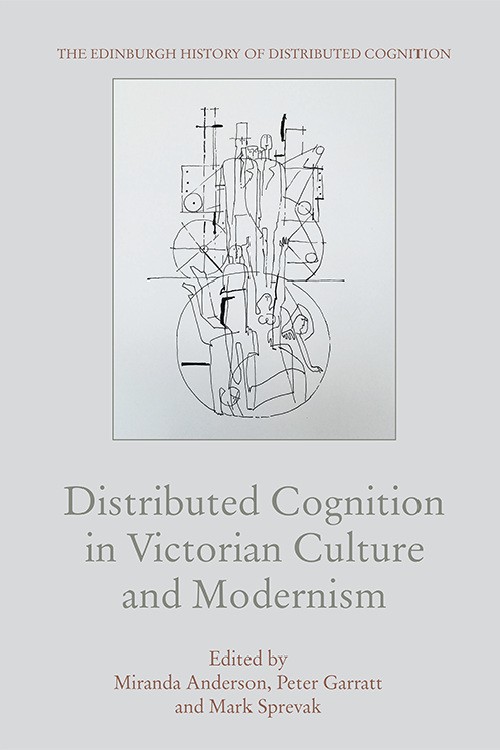Distributed Cognition from Victorian Culture to Modernism
(with Miranda Anderson & Peter Garratt)
2020 Edinburgh University Press: Edinburgh, 304 pp.
Last updated 16 June 2020
Reinvigorates our understanding of Victorian and Modernist works and society:
- Offers a wide-ranging application of theories of distributed cognition to Victorian culture and Modernism
- Explores the distinctive nature and expression of notions of distributed cognition in Victorian culture and Modernism and considers their relation to current notions
- Reinvigorates our understanding of Western European works – including Wordsworth, T. S. Eliot and Virginia Woolf – and society by bringing to bear recent insights on the distributed nature of cognition
- Includes essays by international specialists in Victorian culture and Modernist literature, history, technology, science, philosophy and art including Andrew Michael Roberts, Jennifer Gosetti-Ferencei and Melba Cuddy-Keane
- Includes essays on literature, history, technology, science, philosophy and art
This book brings together 11 essays by international specialists in Victorian culture and Modernism and provides a general and period-specific introduction to distributed cognition and the cognitive humanities. Together, they revitalise our reading of Victorian and Modernist works in the fields of history of technology, science and medicine, material culture, philosophy, art and literary studies by bringing to bear recent insights in cognitive science and philosophy of mind on the ways in which cognition is distributed across brain, body and world.
Reviews
A period of inward and outward expansion, of conflict and suspicion, of innovation and alienation, a time that underscored the continuities of life, mind, and society. As this exciting collection shows, we find in Victorian and modernist culture not just a prefiguration, but the very roots of distributed cognition.
– Ezequiel Di Paolo, Ikerbasque, Basque Foundation for Science
Offers diverse, engaging discussions of the aesthetics of distributed cognition: fresh analyses of modernism and its antecedents are ingeniously developed from views of ‘art and literature as both expressing, and reflecting on, our cognitively embodied life’.
– Randall Stevenson, University of Edinburgh
Contents
Introduction: Distributed cognition in Victorian and Modernism studies – Peter Garratt and Miranda Anderson
The Victorian extended mind: George Eliot, psychology, and the bounds of cognition – Peter Garratt
Instrumental eyes: Enacted and interactive perception in Victorian optical technologies and Victorian fiction – Nicole Garrod-Bush
Aesthetic perception and embodied cognition: Art and literature at the Fin de Siècle – Marion Thain
The heterocosmic self: Analogy, temporality and structural couplings in Proust’s Swann’s Way – Marco Bernini
Distributed cognition and the phenomenology of Modernist painting and poetry (Rilke and Cézanne) – Jennifer Anna Gosetti-Ferencei
Directionality and duration in distributed consciousness: Modernist perspectives on photographic objectivity – Adam Lively
Walking, identity and visual perception in Romantic and Modernist literature – Andrew Michael Roberts and Eleanore Widger
Surrealism, chance and the extended mind – Kerry Watson
Distributed cognition, porous qualia, and Modernist narrative – Melba Cuddy-Keane
Nietzsche’s Genealogie der Moral pro and contra distributed cognition – E. T. Troscianko
A 5th E: Distributed cognition and the question of ethics in Benjamin and Vygotsky, and Horkheimer and Dewey – Ben Morgan
